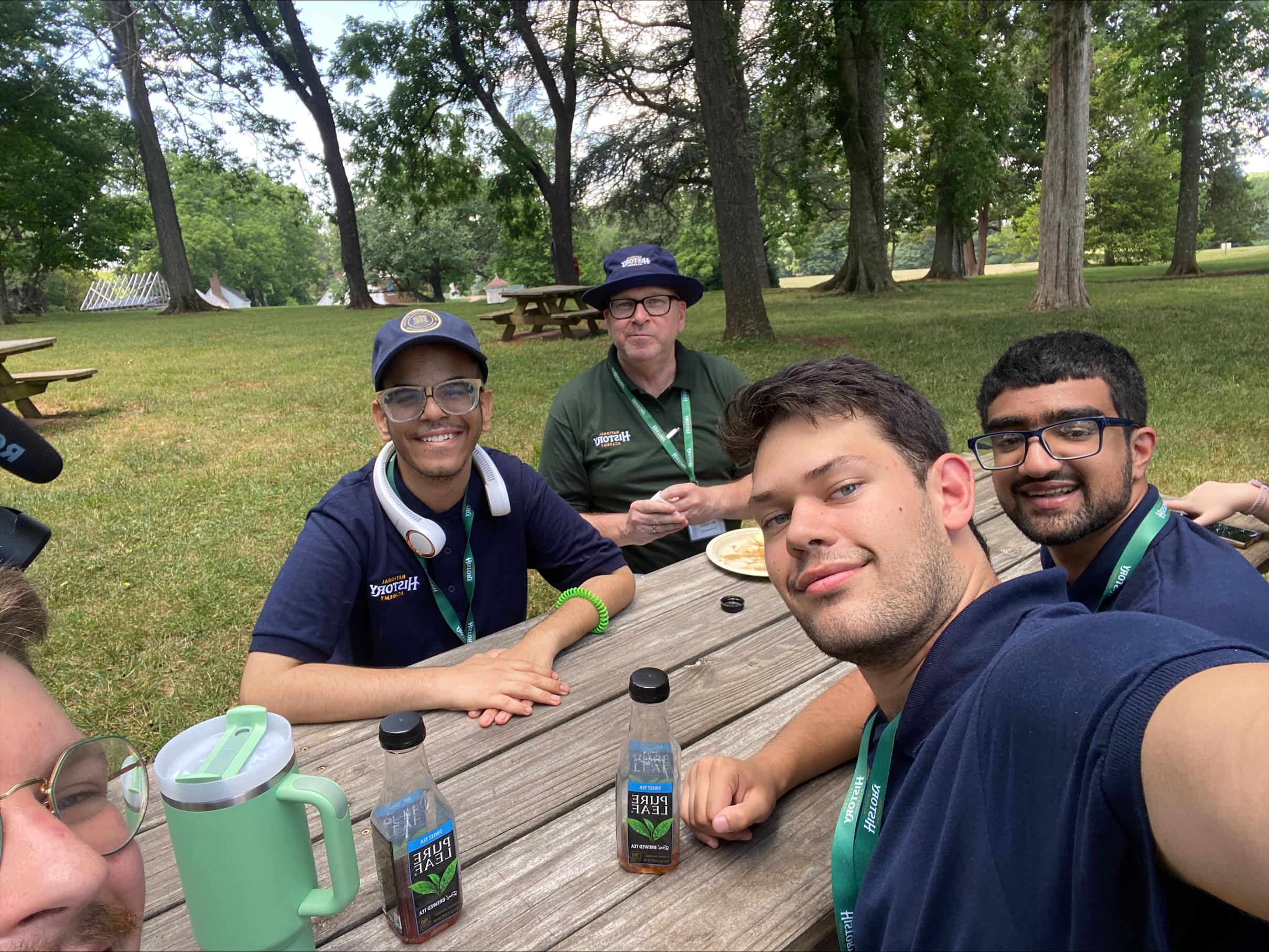We are a nation built on forward progress and the ability of change. The purpose of National History Academy is to be able to look at the past and see the true stories that demystify public figures such as James Madison, known as the father of the constitution and the 4th president of the United States.
On July 5th, I went down to Montpelier with National History Academy to explore James Madison’s home. Before I arrived I saw hundreds of acres of beautiful green landscape and his large mansion in the background. Going to these sites puts into perspective how rich our founding fathers were as this would be a multimillion dollar home even today. We were guided by the wonderful tour guide Bruce who was extremely knowledgeable in the subject and answered any questions we had. During my visit we were shown his house and his admiration for his fellow constituents, even with those he did not fully agree. I believe that is an admirable quality which many Americans do not share today. We got to see where he wrote the constitution and his death bed and heard his last words but that was not the most impactful moment there.
The most impactful moment was when we heard the story of one of Madison’s slaves. Her name was Ellen and after his death, his will stated that he did not want his slaves to be sold if they did not want to be.
However, he gave ownership of Ellen to his wife because tobacco was no longer profitable and they were going broke. Due to this, they started to sell her family members left and right. This crushed her because she thought they were different and begged to be sold to a neighbor. She made an attempt to escape on a ship but was caught and thrown in jail and put back on sale. Eventually she was bought and freed. However, she would never see her family again. It showed how her children and grandchildren were all different shades of brown because of the amount of rape that slaves endured. It was a very moving film.
Looking upon that beautiful field had a different view since I could now see it as a slave plantation. But the thing to keep in mind is that is one story out of hundreds of slaves he owned. What also made it more impactful was seeing where they lived and feeling the scorching 100+ degree heat that they would’ve endured.
This is the story of James Madison the good, the bad, and the ugly. Oftentimes presidents are viewed as “good slave owners” however this experience goes to show there is no such thing. Presidents aren’t the heroes we make them out to be but also aren’t always as evil as they’re made out to be; they are people too, trying to make a difference even if it doesn’t go into effect until later. Everyone works in their own interests, which James Madison understood in his making of the new constitution. However what he ultimately understood was that people’s ideals and views change in the future so he wrote the constitution so it could be amended and made sure that everyone was represented. While this story has its ups and downs it ultimately goes to show that since his time great progress has been made. From Abraham Lincoln and the Civil War freeing the slaves to Martin Luther King Jr. fighting to fulfill the constitutional promise of liberty for all.
It is our job as Americans to defend the fundamental inalienable rights. It has always been the American ideal to “form a more perfect Union “ and everyday we strive to live up that promise and be that “city on a hill.” The fate of the future is up to “We the People.”




